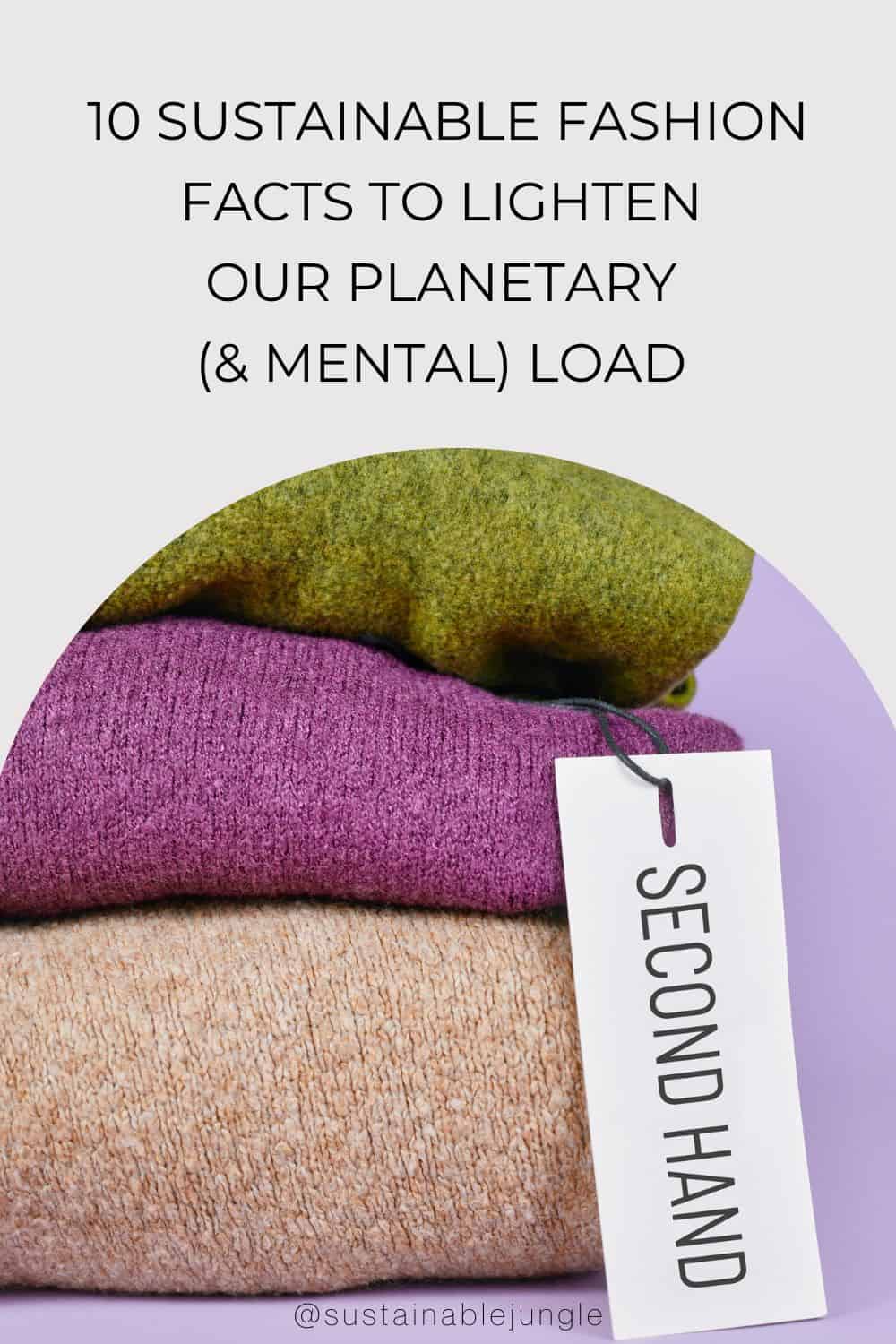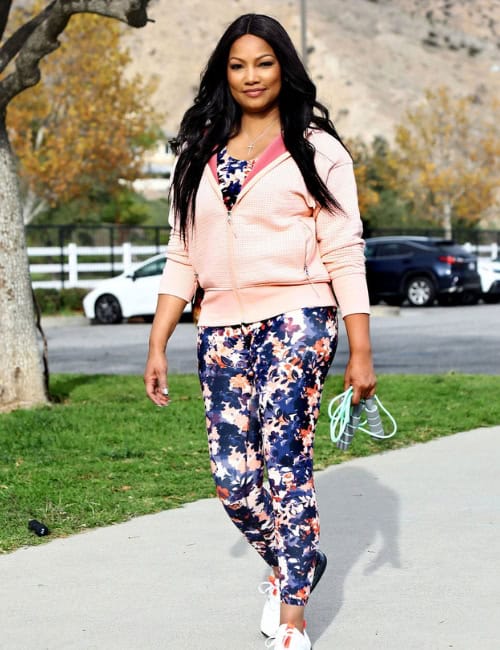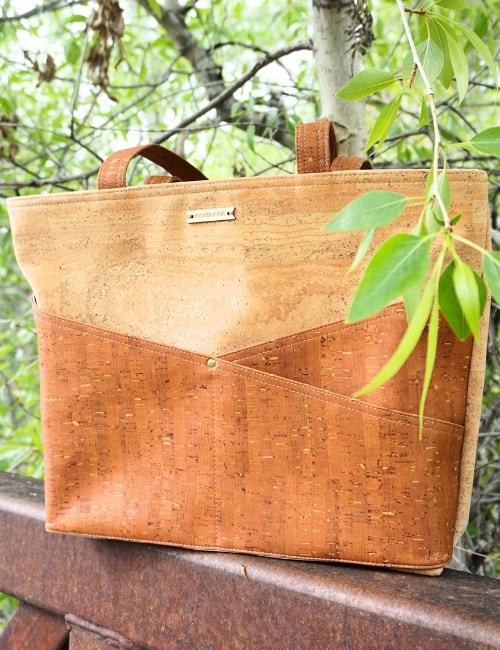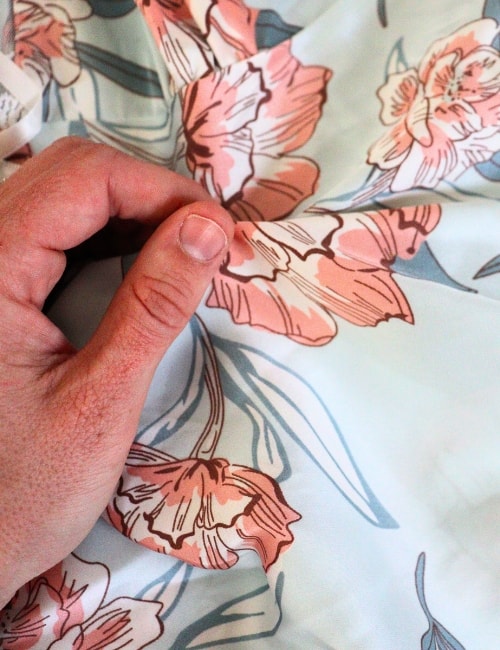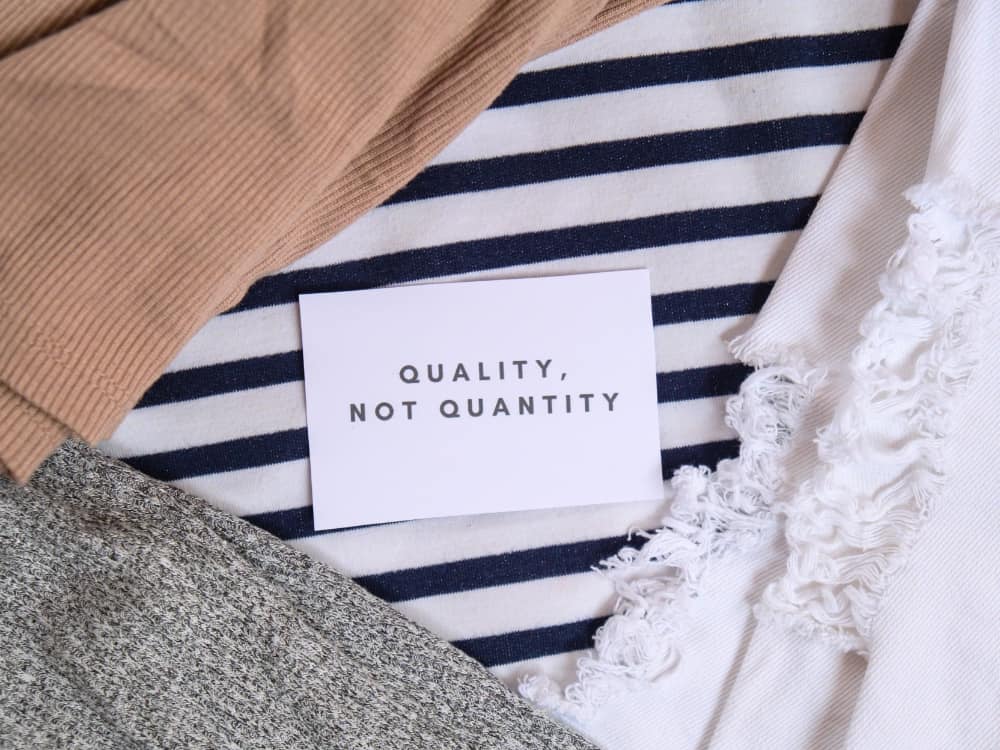
10 Sustainable Fashion Facts To Lighten our Planetary (& Mental) Load
Sure, there are still many brands fast on fashion and slow on sustainability.
That said, progress is happening within the notoriously destructive fashion industry.
After laying out all the horrors in our fast fashion facts piece, we wanted to celebrate sustainable fashion facts that indicate justice, sustainability, and a cruelty-free and ethical clothing industry are here to stay.
So while yes, the conversation around the global ethical fashion market has grown faster than tangible progress, we believe that the more we can point to the successes of a sustainable fashion industry, the more it will gather steam.
The slow fashion movement, like the tortoise and the hare, is a story of steady perseverance.
We keep faith that the tortoise (sustainability) will eventually win, with humanity’s acknowledgement of the industry norm, or rather the “hare’s” speedy destruction, being overtaken slowly but surely by caring, sustainable fashion brands.
So, why is sustainable fashion so important?
Let’s stroll down the runway of sustainable fashion statistics and facts that inspire continued sustainability progress for the better of all.
The Full List Of Sustainable Fashion Statistics & Facts
- Millennials and Gen Z shop more sustainably
- 100% of all textiles are recyclable
- Pre-loved and secondhand market to grow in the next five years
- Fashion rental can expect 10% a year growth
- 14% of brands have improved animal welfare
- Ethical fashion market is estimated to reach over $3 billion
- Circular fashion is making its mark
- Regenerative farming for regenerative fashion is on the rise
- Rampant greenwashing is finally being cracked down on
- Stronger protection is being developed for garment workers
1. Younger Generations Are Leading The Change, With Approximately 60% Of Millennials and 55% of Gen Z Saying They Shop More Sustainably

And 60% and 55% are on the more conservative side of estimates.
One poll of sustainable fashion statistics for the younger generations found that a whopping 73% of millennials are willing to pay more for sustainable brands.
In a report by Depop & Bain and Company, 90% of Gen Z say they’ve adjusted their daily life to be more sustainable to reduce carbon emissions and that sustainable fashion choices played an important role in this.
Gen Zers believe brand promises regarding social and environmental sustainability have a big impact on their fashion purchases, with a brand’s commitment to fair wages and workplace safety influencing 70% of those polled and a brand’s commitment to reduced carbon emissions influencing 60% of respondents.
The main issue is the gap between consumer attitudes and behaviors, with millennials and Gen Z often proclaiming commitment to more sustainable materials, but then purchasing the opposite.
According to researchers, there are two main reasons for this: cost and social media.
According to a sustainable fashion statistics 2022 report by popular second hand store thredUP, Gen Z cannot resist buying fast fashion, “despite their sustainable values”.
Approximately 1 in 3 Gen Zers said they felt addicted to fast fashion, and 45% of college students stated that it’s “hard to resist the temptation that fast fashion offers”.
This means two things: the world needs more sustainability influencers and eco-friendly clothing brands must find a way to include options at low prices.
2. 100% Of All Textiles Are Recyclable

Recycling textiles has long been an impediment for the fashion sector, with statistics on sustainable fashion indicating less than 1% of all clothing waste is spun into new fashions. Currently, recycled sustainable materials make up less than 10% of the clothing industry textile market.
According to George Harding-Rolls, campaigns manager at Changing Markets Foundation:
“In 2023, I hope we’ll see the fruits of brands’ investment into recycled cellulosic fibers start to reach the consumer market in earnest. There are small but sure signs that fashion’s much fêted circularity ambitions are starting to be stitched together.”
The main hurdle is the upfront investment it takes to establish infrastructure and to scale up technologies, which the fast fashion industry has very little of currently.
But recycled materials like recycled cotton and recycled nylon, for example, can reduce water use and environmental impact by a whopping 90%.
Sustainable clothing brands like Patagonia, for example, have pioneered new clothes from recycled synthetic textiles and textile waste since 1993.
Another innovator, Swedish company Renewcell, makes a cellulosic pulp called Circulose, which is created from 100% fashion waste. And industry darlings Econyl® save 70,000 barrels of crude oil for every 10,000 tons of Econyl® material made.
Want to recycle old duds?
Learn more about where to recycle old clothes.
3. The Pre-Loved & Secondhand Market Will Grow By 20% In The Next Five Years

Sustainable fashion industry statistics are promising when it comes to fashion resale.
A 2020 survey that used data from online luxury resale giants Vestiaire Collective suggests the global secondhand market will rapidly grow by 20% in the next five years.
Plus, used fashion is now massive on eBay, with UK eBay data revealing that from January to September 2021, over 87 million pre-loved items were purchased. Almost a quarter of these were pre-loved fashion items.
Additionally, insights from the Lyst 2021 Conscious Fashion Report show that there was an exponential jump in demand increase for upcycled fashion; year-upon-year demand increases by 117% for upcycled, recycled, repurposed and reworked items.
For old jeans, there was a massive 321% jump in searches for ‘upcycled jeans’.
Social media trends like thrift flips are also partially responsible for the upswing in secondhand fashion, shifting the attitudes around pre-loved goods toward trendy instead of old-fashioned.
4. Fashion Rental Can Expect 10% A Year Growth

Clothing rental is one of the most environmentally friendly fashion trends.
And as a solution to the never-ending trend cycle in the fashion world, sustainable fashion trend statistics indicate sharing clothes is key to a more sustainable future.
The rental market is predicted to increase at a rate of more than 10% each year over the next five years. Reports also suggest that the value of the online clothing rental market has already expanded to $1.9bn.
Clothing rentals are popping up everywhere, from online fashion libraries to brick-and-mortar rental shops in Europe, North America, and cities in Asia.
Many designers will even partner with rental companies to offer shoppers the possibility of wearing luxury items for a fraction of the price.
If you’re looking to prioritize sustainability, renting wedding dresses, kids’ clothes, maternity clothing, formal wear, and more reduces your carbon footprint and helps address environmental concerns while remaining wallet-friendly.
Some clothing and dress rental businesses even offer a subscription for those buyers who want to refresh their wardrobe regularly without the associated textile waste or cost.
This fast-growing and emerging market introduces a totally new approach to remaining fashionable while also supporting an emergent and sustainable sharing economy.
5. 14% Of Brands Have Improved Animal Welfare

A report titled ‘Animal Welfare In Fashion: Towards a truly ethical and transparent fashion industry’ found that 14% of brands today have improved their animal welfare ranking significantly.
In addition, ethical fashion facts state that 57% of fashion companies now fortunately have a formal animal welfare policy.
Non-violence against animals is an important business strategy for sustainable fashion, since the industry has long been notorious for its cruel, toxic, and extractive approaches to fur, wool, and leather making, which also carry a negative environmental impact.
Unfortunately, most animal supply chains lack transparency, and even sustainability certifications claiming to maintain higher standards of welfare and mitigated cruelty to animals often fall short of their promise to protect.
So long as cruelty to animals is legal and standard to the production of animal-derived materials, these materials won’t align with efforts for ethical and cruelty-free fashion.
6. The Value Of The Ethical Fashion Market Is Estimated To Increase By Over $3 Billion From 2021 To 2025
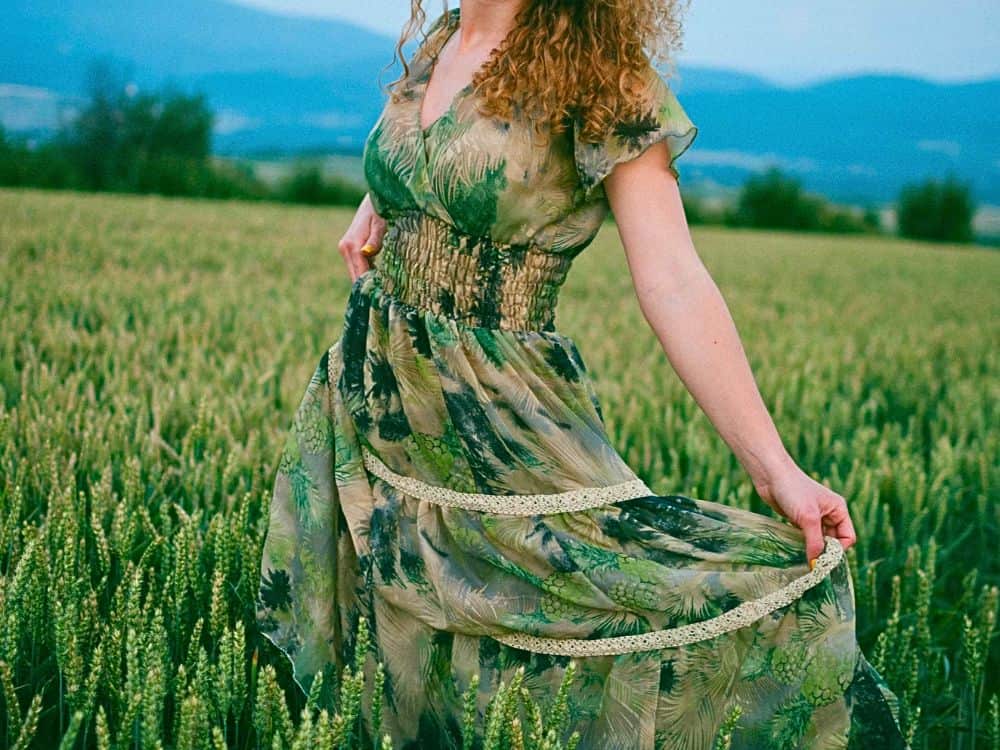
That will bring its total projected value to $10 billion.
While the current fashion agenda is premised upon uninhibited growth that stems from extractive, energy-intensive, and carbon footprint-heavy supply chains with little regard for people or planet, companies say it’s because it’s what the people want.
Meanwhile, numbers suggest differently and sustainable fashion growth statistics are promising.
Our buying power is the best way for consumers to vote for the kind of world they want to live in. And the rapid growth of the ethical fashion market indicates that increasingly, people care about things like ethical sourcing, animal rights, and workers rights.
According to the Business of Fashion, over 90% of executives at worldwide fashion companies believe that it’s critical to the future of the fashion industry to make sustainable fashion.
Plus, there are UN-backed initiatives like the EU-funded Ethical Fashion Initiative, which provides vulnerable and marginalized artisans with training and market access to build strong, resilient businesses, which indicates an industry shifting for the better.
After all, it’s in the industry’s best interest to solve fashion’s environmental and social issues, since it could generate $192 billion toward the world economy, according to the Pulse of the Fashion Industry report.
7. Circular Fashion Is Promising For People, The Environment, & The Economy

Wondering what to do with old clothes?
Soon, you hopefully won’t have to as more and more fashion companies build circular economy practices into their production models.
According to the Ellen MacArthur Foundation, circular business models for fashion based on organic or recycled materials could generate well beyond the aforementioned $192 billion, with the Foundation’s sustainable fashion market statistics placed at a jaw-dropping economic opportunity of $560 billion.
Fashion’s linear model that brings clothes straight from the manufacturing line to the landfill needs radical transformation.
Fashion circularity offers just that, by tackling the global apparel industry’s most pressing issues, such as pollution, fashion waste, and climate change, while also generating opportunities for responsible growth.
The Foundation asserts that the fashion restoration, resale, repair, customization and rental markets are already worth more than $73 billion, with resale and rental companies like Depop and Rent the Runway valued at more than $1 billion.
The Foundation also projects that circular models could grow from their current 3.5% portion of the global fashion market to 23%—or one quarter of the total market—by 2030.
Circular and zero waste fashion (IE a closed-loop system to produce clothing) is a holistic design approach rooted in indigenous approaches to resource management, which aims to “design out waste” via the reduction of used natural resources for making clothes and diverting products away from landfills.
In short, circular fashion is making new clothing from used clothing.
Once fashion fully embraces the vision of this closed-loop system, materials will be endlessly reused and recycled into highly durable goods, thereby eliminating waste and pollution by limiting the extractive production of virgin raw materials, regenerating natural ecosystems, and eradicating the waste of textile production.
Now THAT’S a sustainable fashion fun fact we can really get behind!
8. Regenerative Farming For Regenerative Fashion Is On The Rise
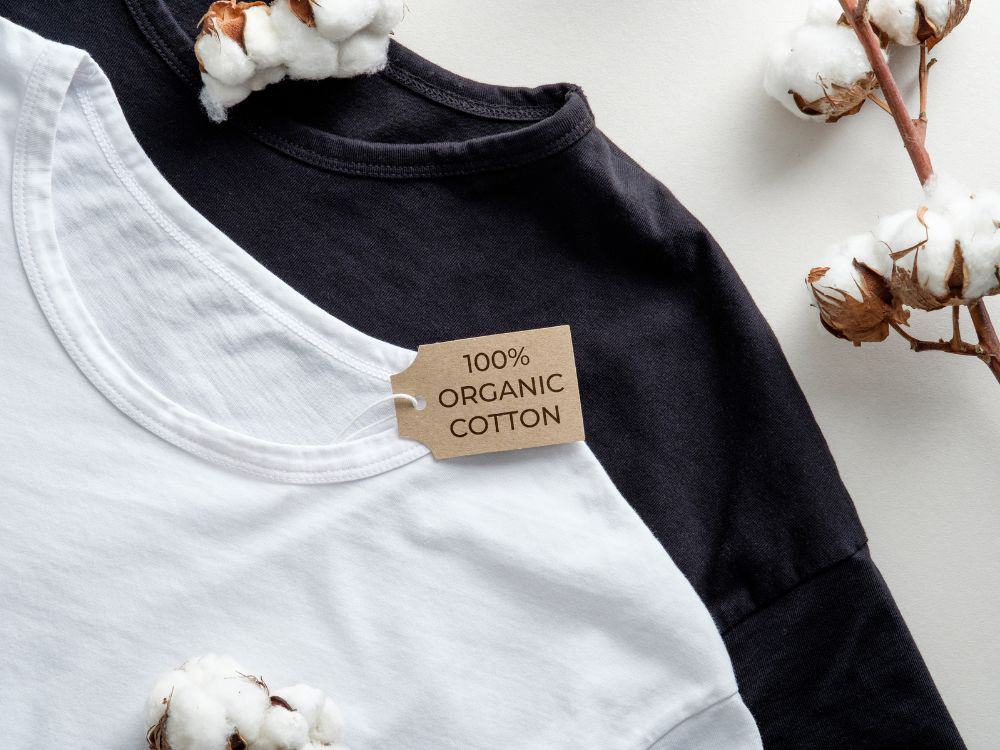
As per the EU Climate Impact report, by 2030 it’s estimated our fashions will be entirely “rented, recycled, or regenerative,” thus making fashion’s regenerative agriculture initiatives some of the most hopeful and fun facts about sustainable fashion.
Said one NYT article, “Brands like North Face, Allbirds and Patagonia, as well as the Kering luxury group, are all about agriculture these days. Here’s the dirt. Regenerative fashion is on the rise.”
The global sustainable textiles and apparel market size was valued at $51.53 billion in 2022 and is projected to reach $69.5 billion by 2030, growing at a CAGR of 12.50% from 2023 to 2030.
The increasing awareness regarding the environmental impact of the textile industry is driving the growth of the sustainable textiles and apparel market.
Afterall, the textile industry is one of the most polluting industries in the world, as it accounts for 10% of the global wastewater and 20% of the global industrial water pollution.
Sustainable fabrics derive from materials that are less harmful to the environment, such as organic cotton, recycled polyester, and lyocell fabric. These materials require less water, energy, and chemicals to produce, making them a more sustainable option.
Alongside reusing textiles that already exist, as per the circular fashion model, an increasing number of fashion companies are adopting regenerative fibers, which are materials created in such a way that’s beneficial for ecosystems and even increases biodiversity.
Says Ashley Gill, Textile Exchange’s Chief Strategy Officer:
“In 2022, we saw some increased interest in regenerative agriculture. There has been more connection and collaboration along the supply chain, and bigger commitments to biodiversity. We now need to move towards scaling these solutions, making them the new normal.”
What is regenerative fashion, then?
Says one report by Wunderman Thompson”
“Harking back to indigenous practices that instinctively work in harmony with nature, regenerative agriculture is a loose term for a raft of techniques, including crop rotation and no-till farming, that actively restore soil and build its resilience.”
9. Rampant Greenwashing Is Finally Being Cracked Down On
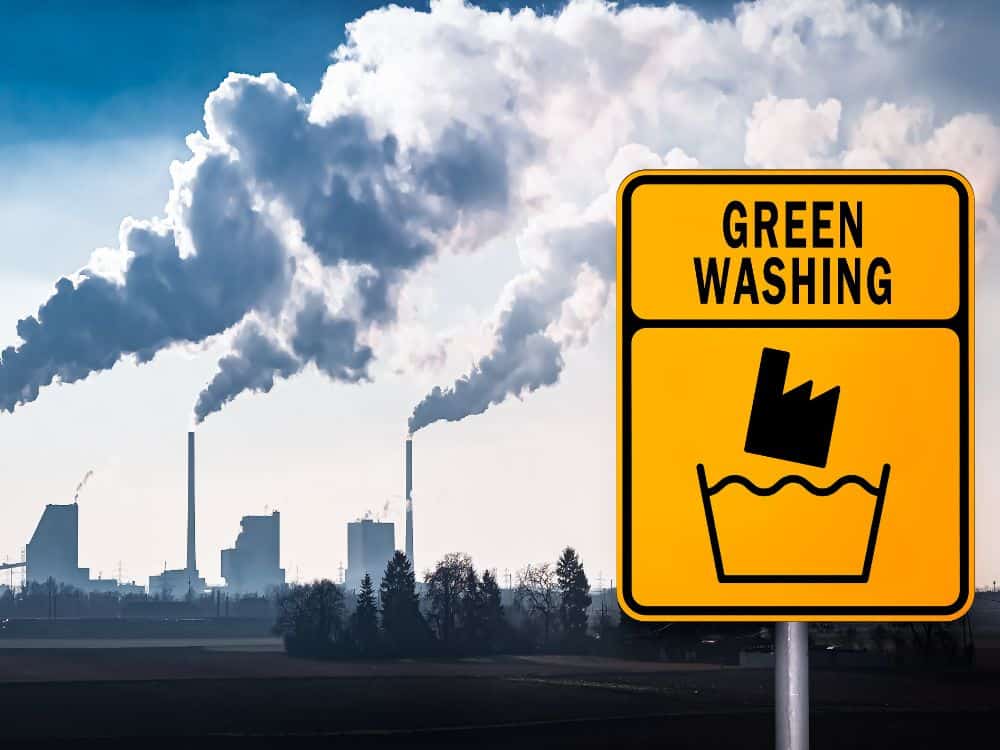
More hopeful eco-friendly fashion facts include that in just the past year alone, the world has seen a tougher stance on greenwashing.
The EU has a legislative proposal on green claims that will soon take effect, which will legally ban greenwashing and improve consumer information of durability.
The Netherlands’ Authority For Consumer Markets is already cracking down on generic environmental terms such as “eco-friendly” and “conscious”.
Then there is the Norway Consumer Markets Authority, who found that data used by fast fashion retailers like H&M from the Higg Materials Sustainability Index could “easily be considered misleading.”
And the trend toward consumers knowing the truth is set to continue, with the UK Consumer Market Authority’s investigation into fashion brands also soon concluding, which means we’re likely to see further prosecution of fast fashion brands who fail to stop dubious green claims.
10. Stronger Protection Is Being Developed For Garment Workers

Fortunately, ethical facts about fashion highlight the recent strong push for slow fashion and better protection (and a living wage) for garment workers as more people demand to know #WhoMadeMyClothes.
In the US, this is evidenced by the Garment Worker Protection Act in California that became effective in early 2022.
The EU has also launched its proposed human rights due diligence legislation, which would require apparel and footwear industries to address human rights issues across their supply chains.
This directive, once adopted, has the potential to revolutionize how companies are held accountable for their practices within supply chains around the world by placing legal responsibility on parent companies based on the laws of the country they are headquartered in, not the (often hazy) laws of the offshore factory nations.
In the US, the proposed Fashioning Accountability and Building Real Institutional Change (FABRIC) Act would offer greater protections for nearly 100,000 US-based garment workers.
Then there is the International Accord for Health and Safety, a legally-binding contract between brands and trade unions to ensure safe working conditions are extended beyond Bangladesh to Pakistan.
According to Ayesha Barenblat, founder and CEO of Remake:
“We know that thousands of workers are [now] safer thanks to the Accord in Bangladesh. With the programme now headed to Pakistan, the unions and labor rights community are looking to leadership [from brands] in extending similar safety for Pakistani workers.”
Did you know we Have a Newsletter?
We cover the latest in sustainable living, fashion, zero waste, beauty, travel, finance and more…
Final Thoughts On Sustainable & Slow Fashion Facts
Trends come and go, but sustainability preserves our planet for lifetimes to come.
And the best fashion styles of the future will be those that make a positive impact on the world and its inhabitants.
Because let’s face it, fast fashion has had a decent run… into the dumps and devastating effects of climate change.
In less than thirty years, the billions of dollars it has generated have come at the cost of millions of lives negatively impacted, and millions of facts about its corresponding environmental emergency.
But together, we can not only avoid fast fashion but also make the fashion industry a force for good by inspiring positive change through education and empowerment.
An easy and effective way to do that is by sharing this helpful article on facts about sustainable fashion—because did you know facts about fashion sustainability are likely to inspire change?
The next time your patent leather-loving friend moans, “But what are the points of sustainable fashion?”, please shoot these happy, handy sustainable fashion facts their way.
After all, they’re proof positive that making sustainable fashion choices—like choosing to buy less (a la a minimalist wardrobe mentality) and buy from ethical clothing brands—CAN make a difference.
Pin these:
